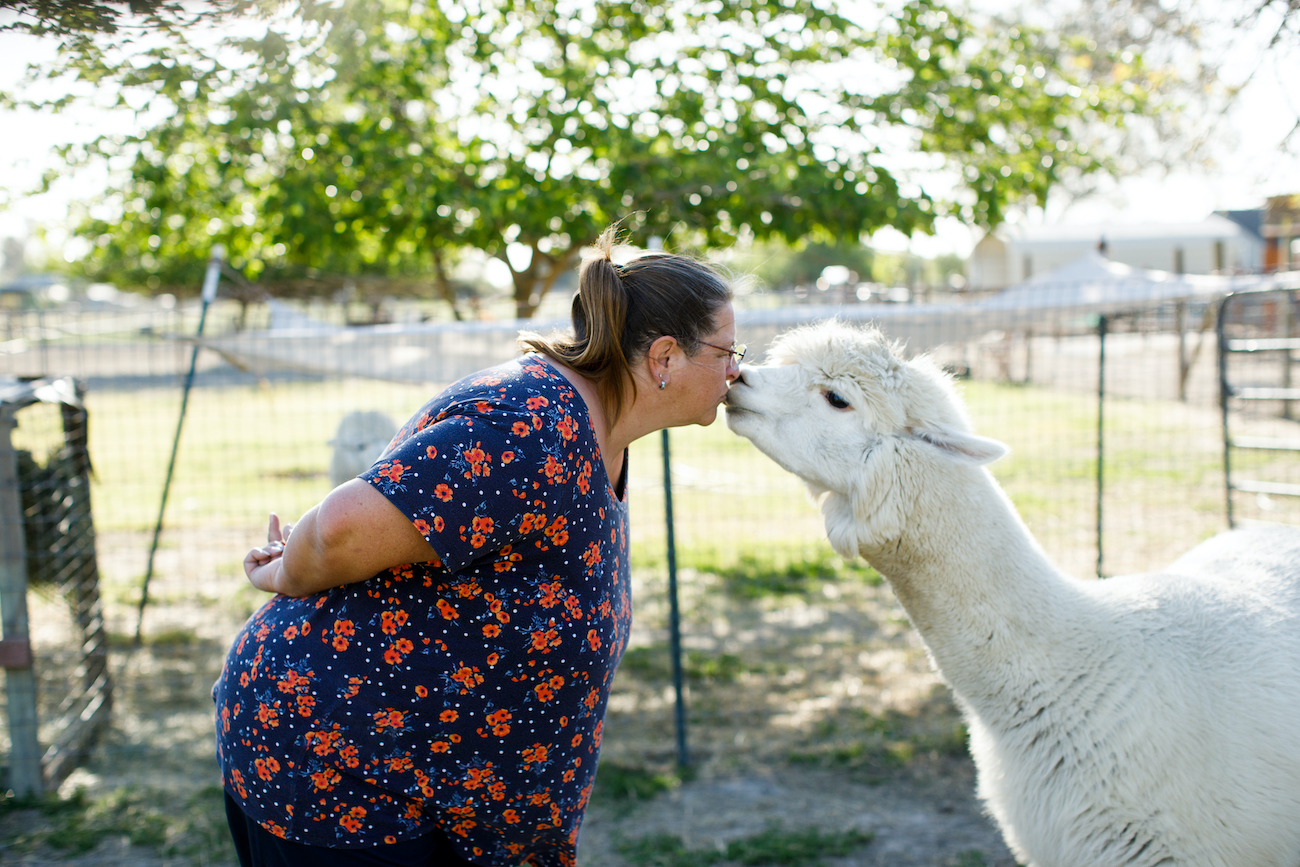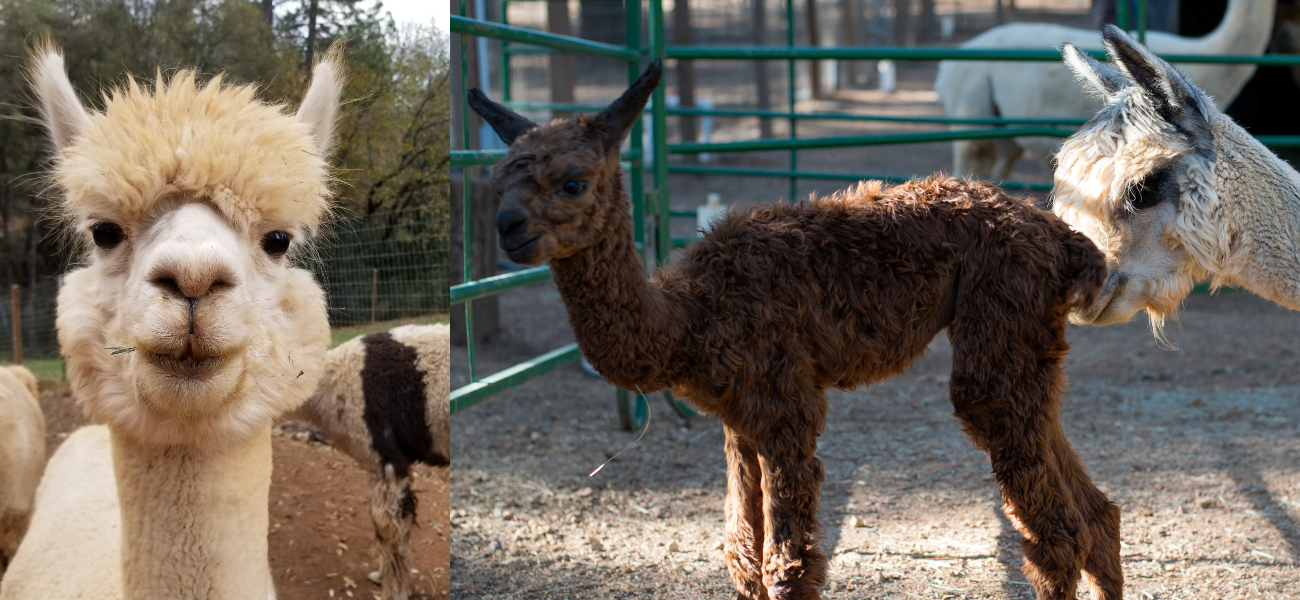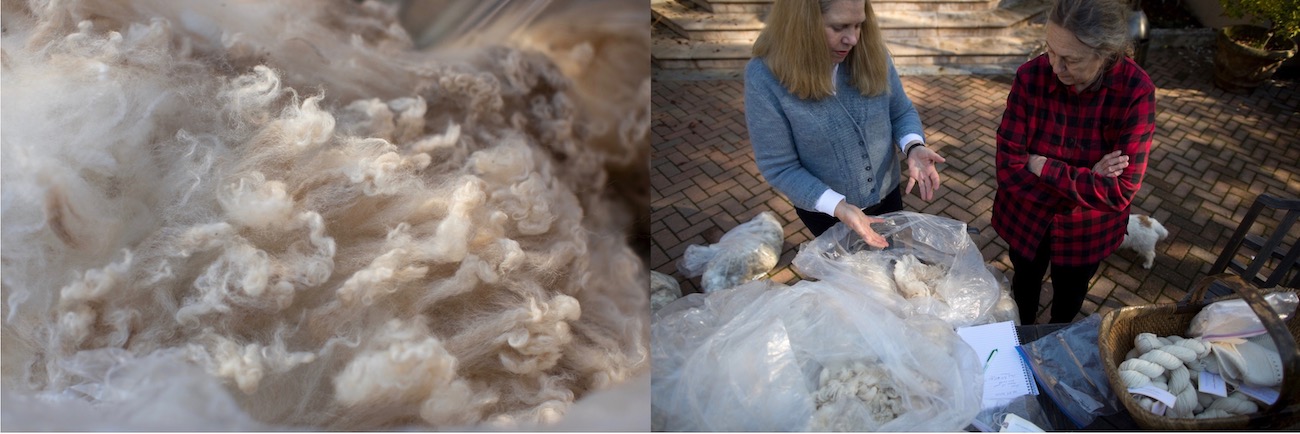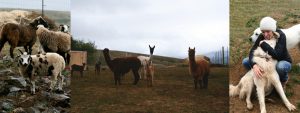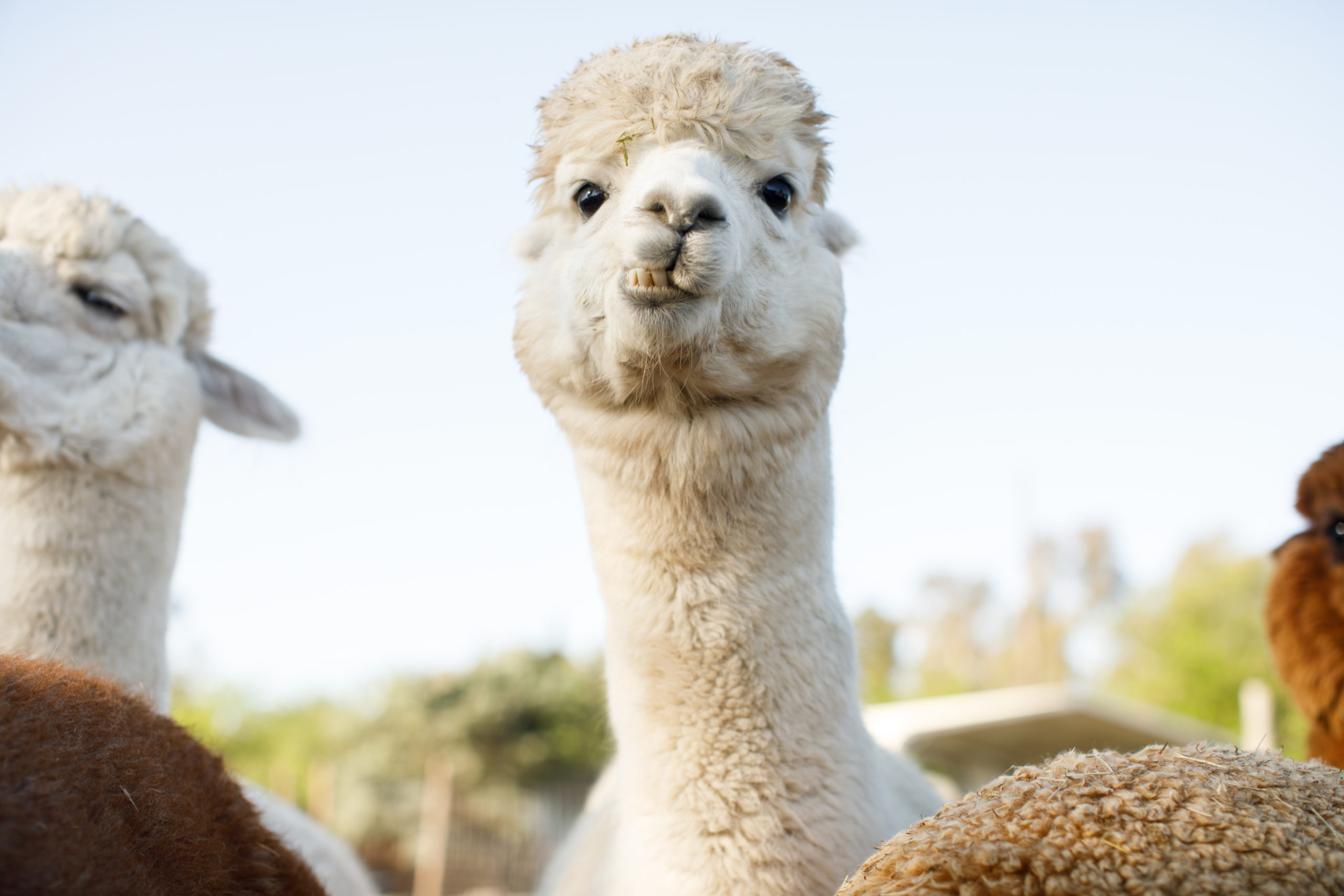
The benefits of raising alpaca go beyond their provision of fiber. Alpacas are naturally gentle creatures, generating a minimal environmental footprint that enables alpaca farmers to integrate the herd into ecological restoration plans. Along the way, alpaca farmers also find meaningful connections with the animals, the land, and a close-knit community of avid alpaca lovers.
Alpaca Fiber: A Multifaceted Material
The superior quality of alpaca fiber has long been recognized. Alpaca fiber is strong, warm, and incredibly soft. Alpaca fleece is also naturally hypoallergenic, making it extremely versatile, and an ideal material for everything from newborn-baby to high-end products. Alpaca fiber has been a part of textile and clothing traditions for thousands of years. According to the International Association of Alpacas, the Peruvian Andes is responsible for 80% of the world’s global production of alpacas, yet alpacas are now raised in communities around the world. Thousands of families raise alpacas and share their beautiful fibers locally.
Are Alpacas the Most Sustainable Animal on the Planet?
Beyond their incredible fiber, alpacas produce immense ecological value. Alpacas graze without pulling plants out by the roots and nibble only the upper parts of grass, thus permitting immediate regeneration. This makes alpacas an amazing addition to any farm or ranch, particularly when farmers want to implement regenerative agriculture practices and diversify their farming operation. According to the Council of Fashion Designers of America, Inc. (CFDA), when alpacas are managed responsibly, they are considered to be one of the kindest animals to the planet with minimal negative environmental impact.
Here are a few more reasons why alpacas are incredibly sustainable:
- Alpacas produce 22 natural colors, greatly reducing the need to rely on dyes. This saves a considerable amount of energy and water.
- Alpaca dung creates excellent compost. Alpaca dung is high in nitrogen and potassium, yet low in odor. Alpacas are pseudo-ruminants, having a single three-chambered stomach that digests roughage, grass, and hay efficiently into a manure often known as “green gold” for its high nutrient content. Those nutrients are then spread on the pasture to build healthy soil and encourage vibrant grass growth in seasons to come.
- Alpacas are efficient! They need less food than other fiber-producing animals, contributing to their incredibly light footprint.
- Instead of hooves, alpacas have soft pads. This allows them to have less of a compacting impact on the ground.
In addition to the superior fiber quality and environmental benefits of alpacas, they also bring real joy to the people who raise them. Keep reading to meet some of the alpaca farmers who are part of the Fibershed Producer Program.
8 Amazing Alpaca Farms
Fibershed has had the privilege of working with alpaca farmers throughout northern and central California who have experienced firsthand the benefits of raising these productive and lovable animals. Following are stories from across the years of some of the farms and farmers lending their expertise to their local fibersheds.
1. Integrity Alpacas
“Alpacas not only receive what they need from the land, but they are also complementary to it,” says Charlene Schmid of Integrity Alpacas. “Their soft-padded feet don’t do much damage, and they bite off the top of grass instead of pulling it off. It is a lovely, symbiotic relationship, and we realized that we had the power to shape our five acres into something that would not only make a difference for our animals but also contribute positively to climate change.”
Read the story behind Integrity Alpacas here.
2. Rockstar Alpacas
“No matter what I’m doing, how stressful my day may be, I can come out and sit with them, and I am transported from this crazy ‘I need it now’ world to this very peaceful, serene life,” says Lisa Beatty of Rockstar Alpacas. “I tell all my friends, ‘just go out to the ranch, pull up one of the Adirondack chairs, and just be with them.’ Just watching them can put you in a trance; it takes your blood pressure down. …For me, that’s the heart of all of it. It’s a labor of love. I have passion for it, and that’s what drives me.”
Read the story behind Rockstar Alpacas here.
3. Sierra Rose Alpacas
When talking about fiber quality and micron counts, Cynthia Kuhlmann of Sierra Rose Alpacas confesses that she and her husband “didn’t get into it for the fleece at all. We got into it for the animals. We love the animals. Fleece wasn’t even on the radar. As time went on, we were getting a lot of fleece and learning. We moved into the fleece side of things after having animals for three or four years.”
Read the story behind Sierra Rose Alpacas here.
4. Valhalla Farms
The Valhalla yarn shop boasts of exceptional fibers with skeins named after delectable treats like “Ambrosia,” “Marshmallow Cream,” “Whipped Cream,” “Dark Caramel,” and “Cappuccino Froth,” among others. The menu of yarns reflects the seasoned experience for high-quality fiber, paired with an artful eye and dedicated effort to produce the best of the best for hand knitters to enjoy.
Read the story behind Valhalla Farms here.
5. Alpacas of Marin
Sandy Wallace of Alpacas of Marin’s love and understanding of her herd is evident: as she gently moves them from one area to another, she knows their language. Alpaca communication is a valuable tool that Sandy understands and utilizes while working with her animals. She knows each individual alpaca and gently calls and talks to them; she speaks to each individual calling them by name (all seventy-eight). They have names like Juan Carlos, Hawkeye, Kissyface, Anabella Chi, Diva, Spaceman Spiff (our intrepid hero), Tempest, Red Storm, Miss Silk and Squeak. And there is also Coppola, a national champion.
Read the story behind Alpacas of Marin here.
6. Macedo’s Mini Acre
“Alpacas are the coolest, most unique, and very gentle creatures, with amazing fiber,” says Maureen Macedo of Macedo’s Mini Acre. “I like that alpaca fiber has a good soft hand – it’s good to work with – but you don’t have to wash it before you start working with it. They are really sweet animals and smart enough to do an obstacle course!”
Read the story behind Macedo’s Mini Acre here.
7. Menagerie Hill Ranch
The love Deb Galway and Kirk Howard of Menagerie Hill Ranch have for the animals seems to be what keeps them going in the work. The two stay plenty busy throughout the year, what with the constant parade of activities that goes along with raising livestock. Aside from the simple weekly chores of feeding the animals, cleaning pens, and checking up on their health and well-being, the couple also participate in a number of events. These include taking animals to the local fairgrounds for Ag Day (a program for schoolchildren), having booths at various fiber and agricultural fairs, and showing them competitively at various alpaca shows.
Read the story behind Menagerie Hill Ranch here.
8. Spring Coyote Ranch
Carbon Farming is something Kelli Dunaj of Spring Coyote Ranch is really excited about. In the three short years since the ranch started, it’s come pretty far. Part of her vision for the next three years includes a lot more compost. Beyond tending to the overall wellbeing of the land and animals, Kelli’s visual talents are infused in every decision. Each new animal brought in is done so with thought put towards wool color and texture, which is in part a function of how well they will thrive in the microclimate of the ranch.
Read the story behind Spring Coyote Ranch here.
Please note that this is a collection of stories from over the years and may not represent the current and new initiatives on these farms. If you would like to learn more about a particular producer’s feature, please get in touch!
Photos by Paige Green, Alycia Lang, Koa Kalish, and Sarah Lillegard.

